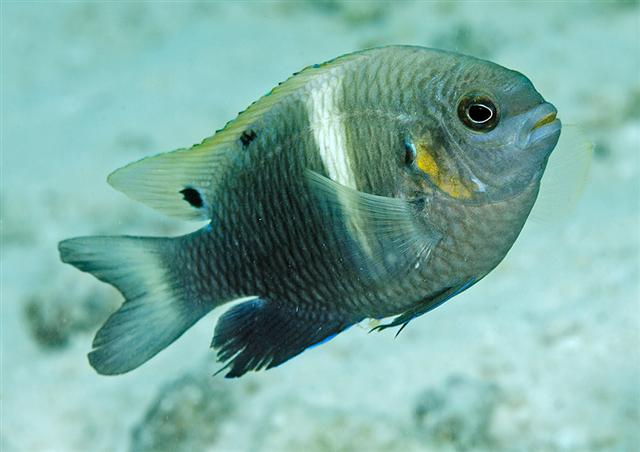| Pomacentridae (Damselfishes), subfamily: Pomacentrinae |
| 12.5 cm TL (male/unsexed) |
|
reef-associated; marine; depth range 0 - 5 m, non-migratory |
| Indo-Pacific: East Africa to the Marshall and Gilbert islands and Samoa, north to the Ryukyu Islands, south to Australia. |
|
Dorsal spines (total): 13-13; Dorsal soft rays (total): 12-14; Anal spines: 2-2; Anal soft rays: 13-14. Bluish or purplish spots at the posterior base of the dorsal fin. Juveniles with large ocellus that reduces with size and lacks completely in adults. The white band in young reduces to a small white saddle in large adults (Ref. 48636). Body depth 2.2-2.5 in SL (Ref. 90102). |
| Adults occur in protected inner reef flats and shallow lagoons and channels, over rubble and rocky outcrops. Feed primarily on filamentous algae (Ref. 7247). Oviparous, distinct pairing during breeding (Ref. 205). Eggs are demersal and adhere to the substrate (Ref. 205). Males guard and aerate the eggs (Ref. 205). Diurnal species (Ref. 54980; 113699). |
|
Least Concern (LC); Date assessed: 03 February 2021 Ref. (130435)
|
| harmless |
Source and more info: www.fishbase.org. For personal, classroom, and other internal use only. Not for publication.
